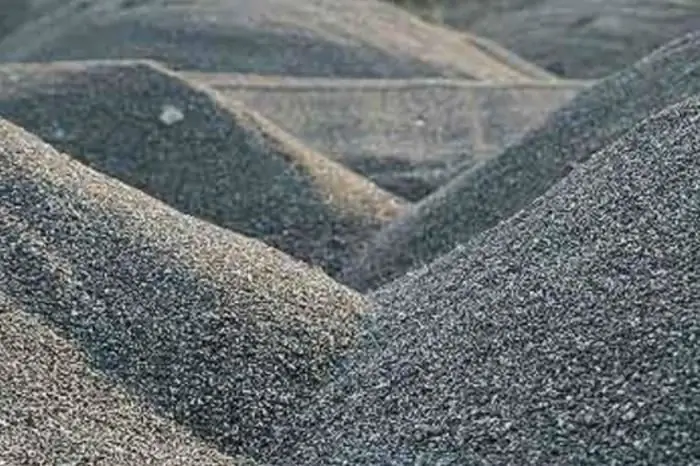2026 Author: Howard Calhoun | [email protected]. Last modified: 2025-01-24 13:10:47
Due to the fact that the efficiency of solving tasks depends on the competent use of the gabion and the choice of stone filler, the choice of material must be approached with all responsibility. Experts recommend the use of natural or artificial stone of coarse crushing, which meets the requirements for shape, composition, size and characteristics. The choice of stone is determined by the type of structure, which can be underwater or surface. Sometimes it is acceptable to use local material.
Selection of stone by shape and material

If you need a stone for gabions, then you should use the experience of the majority and choose the most popular material, which is a hard igneous rock, namely:
- bas alt;
- granite;
- diorite;
- quartzite.
Sandstone and other metamorphic rocks, which are highly durable and stable, are allowed. The form very often does not matter, because only decorative structures shouldhave a certain shape of the material, while for functional landscape structures the size matters, which should be greater than the parameters of the gabion cells.
Gem size

When choosing a stone for gabions that will serve as bank protection, one should be guided by the rule that says: the design must be as reliable and efficient as possible. Other challenges are the durability and feasibility of using the structure. In this case, it is important to carefully consider the choice of stone fraction.
For surface gabions, it must exceed the size of the grid cell by 30% or more. For underwater structures, the size of the stone should be 50% larger than the grid cell, the same applies to filling gabions that will be used in areas with variable water levels. Usually gabions are not filled with material, the fraction of which exceeds 250 mm. For use in areas with wave loads, the filling provides for the placement of a stone at 2/3 of the height. For uniform filling of the cavity, it is permissible to use 10% of the total volume of filler of substandard stone material of a less impressive fraction in accordance with the project.
Selection of stone according to characteristics

When choosing a stone for gabions, you should also pay attention to its characteristics. The main ones are stability and durability. The latter must be equal to M1000 or more. As for frost resistance, it should not be lower than F150.
If you decide to purchase granite filler, you should clarify the degree of radioactivity, because imported stone may not meet Russian standards. After a competent calculation of retaining walls and protective structures, as well as the choice of stone, it is possible to solve the most complex problems of territorial planning, decorative improvement and reinforcement.
Select by additional characteristics

A stone for gabions, in addition to the above characteristics, must also meet additional ones. Among other features, it is necessary to highlight the specific gravity, which must necessarily be increased. Experts recommend using a material with this characteristic starting from 17.5 kN/m3. If you decide to build a hydraulic structure, then this parameter should be equal to 23 kN/m3 or more. In this case, the structure will be immersed in water. It is also important to pay attention to the resistance to blurring. This parameter is determined by water absorption, which must be at least 0.6%.
Choose a stone with good hardness, this parameter is determined by the Protodyakonov scale and should not be less than 19. If you decide to build a fence of stones, gabions can be filled with material with a certain softening coefficient. It determines the reduction in strength when immersed in water. This coefficient should not exceed 0.9, which is true for igneous and metamorphic rocks. As for sedimentary ones, the softening coefficient for them should be0.8 or less. Such a stone can be used for operation in hydraulic structures.
If you plan to fill gabions with stone, you should pay attention to the loss of mass of material. It determines the stability of the structure against decay and should not exceed 10%. Particular attention should be paid to environmental cleanliness. There is no need to rush to purchase gabion filler, which is too cheap, even if its appearance is impeccable. When there is no certificate for the material, this may indicate its radioactivity. Stones can simply be dangerous not only for he alth, but also for the environment.
Glass stone

Glass stone for gabions can be one of the best solutions for infilling a structure. This material has a size ranging from 1 to 30 cm. When using it, you can take into account the main property of glass, which is expressed in the ability to transmit light. This opens up many interesting possibilities.
When exposed to sunlight, the effect of refraction is obtained, which makes the edges beautifully iridescent. You can change the color illumination by playing with the light, then the same stones will look different at certain times of the day. It is noteworthy that this stone is environmentally friendly, as it is natural, so it can be used close to a person.
You can choose glass in several shades, sometimes these stones are made to order. As an alternative solution, manufacturers offer evensmall polished pebbles, which are glass pebbles of an angular shape. They resemble fine-grained rubble and can be an excellent decor item. Grinding is carried out using a special technology, so it is impossible to cut yourself on pebbles. Such crushed stone can also have sharp edges, and its price is 100 rubles. per kilogram, the final cost depends on the size, processing and color.
Alternative solutions: rubble stone

Another excellent solution for filling gabions is rubble stone. Its price per ton is 1350 rubles. In this case, we are talking about a material whose fraction varies from 20 to 40 mm. If the size of the stone is 5-20 mm, then you will have to pay 1400 rubles for it. per ton. When the dimensions of the elements increase to 70-150 mm, the price becomes equal to 1450 rubles. per ton.
Usually rubble stone for gabions is made from the following rocks:
- sandstone;
- schist;
- gray-pink granite;
- quartzite;
- quartzite-sandstone;
- porphyrite.
Usually the shape of rubble fillers is round or rectangular, but materials with a polygonal shape can be used. It all depends on the project and conditions. Sometimes stones of a certain shape are required, but this factor is not decisive for the filler.
Conclusion
Granite stone for gabions also belongs to the described class, its dimensions, as a rule, range from 7 to 25 cm, less often - 40 cm. For a project, youYou can also order material of the same or different sizes, but the minimum dimensions should be 30-50% larger than the cell size. Slots and voids are usually left between rubble stones, which are not clogged with sand and earth.
Recommended:
What documents are needed for deduction for treatment: list, rules of registration

In Russia, many citizens can apply for a so-called tax deduction. For example, social type. People are able to recover part of the cost of medical services. But how to do that? This article will talk about the tax deduction for treatment in the Russian Federation
How old do you get a credit card? What documents are needed to apply for a credit card

Credit card processing is popular with banks as customers appreciate the convenience of the product. But not everyone has access to a means of payment with a grace period, because the bank imposes certain requirements on the borrower. Not all customers know how many years they give a credit card and what certificates are needed to obtain it. Terms and rates for credit cards in banks are different, but there are common points
How to delete a message on WhatsApp from an interlocutor, and what is needed for this

Surely every user of instant messengers faced a problem when they sent messages to the wrong users or when there were a lot of mistakes and typos in the message. In such situations, the question arises, how to delete a message from an interlocutor in WhatsApp? After all, few people want the interlocutor to see all these typos, read the message intended for another addressee. And, of course, I want to remove SMS from the chat even before the recipient reads it
RBI: transcript and what kind of work it is. How to get into the ranks of employees of private companies, and what is needed for this

Faced with the abbreviation GBR for the first time, not everyone knows how it stands for. What is a GBR? These three letters are deciphered as "rapid response group". Most often in the modern business world, these are employees of private security services, whose services are included in the complex of protective measures
Density of crushed stone - gravel, granite, limestone and slag. Bulk density of crushed stone: coefficient, GOST and definition

Crushed stone is a free-flowing, inorganic and granular material obtained by artificial crushing. It is divided into primary and secondary. This is an important fact. Primary - the result of processing natural stone: pebbles, boulders, pumice and other materials. Secondary is obtained by crushing construction waste, such as concrete, asph alt, brick. In this text, we will consider in more detail such a property as the density of crushed stone

